| The history of Sacred Heart School dated back to the year 1902 (27 December 1902). In that year the late Rev. Father Hopfgarther (5.1.1871-15.5.1919) built a small "atap' shed to serve as an English school on a piece of land, the present Government Concrete Wharf, where the customs Building stands. | ||||||||||||||||
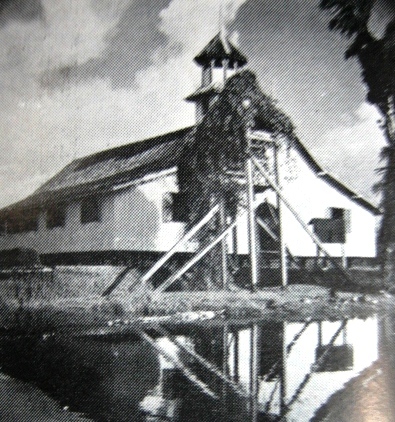 |
||||||||||||||||
| Three years later, in conjunction with changes place in Sibu town, the school move to where the present Ice factory is, along Lanang Road. In place of the temporary 'atap' shed, a larger and more solid building was erected. It consisted of two storey, the ground floor which served as the classroom, and the upper floor which was a dormitory for the boarders. The initial enrolment was about 15 over aged pupils, mainly Chinese. The highest level was Standard One ( now Primary Three ). In those days there was no definite school uniform. According to an ex-student, Mr. Chan Kok Fei, most of the students were clogs to school then. The subjects being taught were English ( Grammar, Composition, Dictation ), arithmetic, some Malay and Religious Knowledge. Chinese was not compulsory but those who wanted to study it had to attend extra afternoon classes. The pupils at that time studied from morning to evening. Morning classes commenced at 8 a.m. and continued until 11a.m. The afternoon classes were from 1.30 p.m. to 4 p.m. and when these were over the pupils played football, the only game being played then. It lasted for one hour and was followed by a session of manual labor ( collection firewood, cutting grass, and so on ). According to Mr. John Tiong Heng Ing, an ex-student, the boarders had to go once a month to the wharf to get sack of rice. In those days, the boarders' food was poor and not as wholesome and nourishing as what the pupils get nowadays. The ordinary food known to them was salted fish, fried Soya beans, kangkong and some other vegetables, together with rice and soup. Fees for boarders which were supposed to be $3 per pupil per month seemed to have been paid to the Principal by the Rajah. |
||||||||||||||||
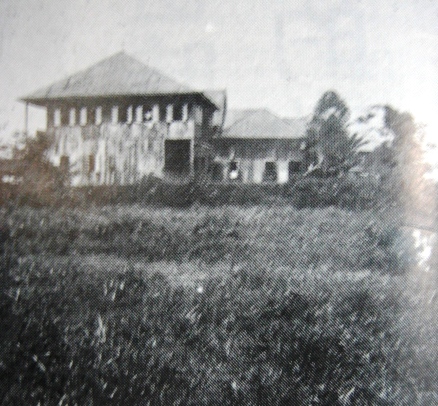 |
||||||||||||||||
| In 1907, the school was transferred to Mission Road. The following year Father Hopfgarther was replaced by Father Vincent Halder who came on transfered from Miri. Along with Father Halder, Brothers Theodore and Simon and some Chinese carpenters extended the school buildings. Father Halder put all his heart and soul into the school work and soon improved the standard of teaching and took in more pupils. By now the number enrolled had increased to about 30 including some Dayak students from Kanowit. There were some assistant teachers too, helping the Fathers to cope with the increasing numbers. Father Halder continued to work enthusiastically and during his period as Principal of the school, progress was steady. By 1924 the enrolment was in the region of 70. In 1928 the highest level was Standard Four ( now Primary Six ). The following year Standard Five ( Form One ) was introduced for the first time. By 1932 the school has classes up to Standard Seven ( Form Three ). In that year the number of pupils had reached 300. In Father Halder's final year as Principal, Chinese was added to the school curriculum. Later a Chinese department was added and this finally became One to Junior Middle Three in 1948. Because of his untiring work, Father Halder is generally regarded as the most outstanding Principal the school has had. |
||||||||||||||||
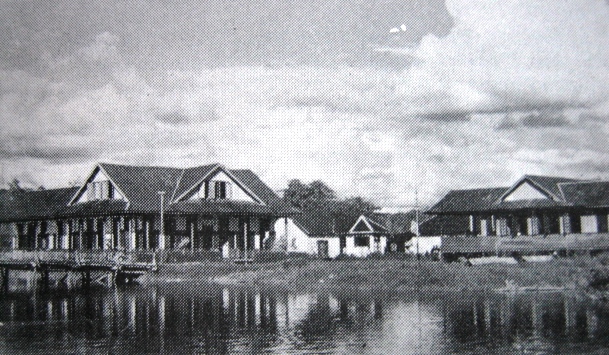 |
||||||||||||||||
| After his death in 1936, Father Halder was succeeded by Rev. John Vos ( later Bishop Vos, Vicar Apostolic of Kuching ) in 1937. He, in turn, was succeeded by Rev. James Buis ( later Bishop Buis of Sabah ) from 1938 to 1946, except for the period of the Japanese Occupation when the school was closed and Japanese troops occupied the building. Towards the end of the war the Australians bombed and destroyed a section of the school. In 1947, the Principal was Rev. John Dekker and he was succeeded by Rev. Father W. Wagenaar, now of St. Mary's Church, Race Course Road, who was Principal during 1948-1949. Like their predecessors, these Principals contributed in no small way to the progress and growth of the school. Conditions in the school were modified considerably. The pupils bought their own books and paid $3 per month as fees. According to Mr. Chan Kok Fei, only the senior boys used books and pens for writing; the juniors used slates and slate-pencils. Some conditional subjects were added to the school curriculum - Hygiene, Geography and History. Volleyball and football were the two main extra-curricular activities. There were tests three times a year and prizes, usually books, were presented to the best students. Many of the pupils were Catholics. During Christmas time, grass and paper flowers were hung around the school and the students were given 20 cents each for sweets. Occasionally the school was visited by the Rajah, Government supervisors and missionaries. After completing Form Three many of the pupils took up jobs in the sectors while the richer ones continued their studies in Kuching or Singapore. The daily routine in the school also changed. The boarders woke up at 5.30 a.m. after washing, attended morning Mass. Breakfast was at 7 a.m. and after it there was session of manual labor. From 8.30 a.m. to 12 noon, the English classes started at 2 p.m. and finished at 4 p.m. Then there was another session of manual labor. Only Sunday afternoon was free. However, many of the ex-pupils staunchly assert that this hectic programme was a very good preparation for their future, because of the training and discipline it entailed. The salary of the teachers at the very beginning as little as $15 per month. There were paid out of the collected school fees which ranged from $4 per month in Primary School. to $6 per month in the Junior Secondary classes. It was only in 1956, when the school became Government aided, that the teachers received higher salaries. Teaching was very strict and punishment was carried out by canning. After the Japanese Occupation the school was reopened in 1946. By 1948 the number rolled had increased to 600 in the English and Chinese schools combined. For a period at that time the Sacred Heart Boys' School was amalgamated with the Sacred Heart Convent School. In 1950, the later Rev. Father Adrian de Vos became Principal and introduced the Junior Cambridge class ( Form Four ) in the English School. The following year the English and Chinese schools were separated. Two years later the girls and boys were again separated. Owing too the pressure of Mission work, Father Adrian de Vos made several attempts to get the De La Salle Brothers take over the English Boys' School. |
||||||||||||||||
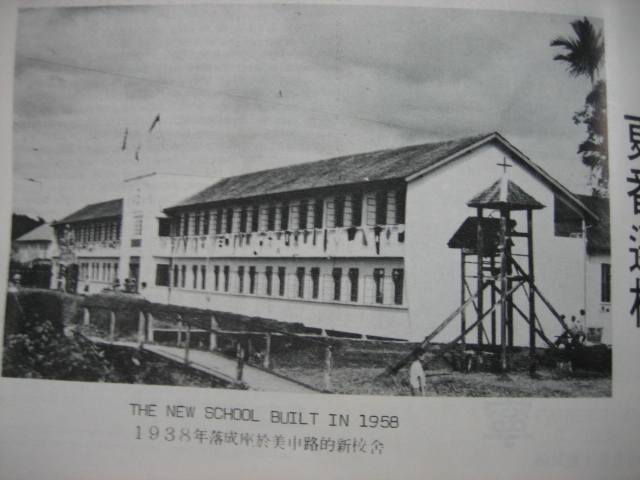 |
||||||||||||||||
| After the Japanese Occupation the school was reopened in 1946. By 1948 the number rolled had increased to 600 in the English and Chinese schools combined. For a period at that time the Sacred Heart Boys' School was amalgamated with the Sacred Heart Convent School. In 1950, the later Rev. Father Adrian de Vos became Principal and introduced the Junior Cambridge class ( Form Four ) in the English School. The following year the English and Chinese schools were separated. Two years later the girls and boys were again separated. Owing too the pressure of Mission work, Father Adrian de Vos made several attempts to get the De La Salle Brothers take over the English Boys' School. In January 1954 the De La Salle Brothers arrived to take it over under Brother Fridolin as Director. The convent school was run by the Sisters and soon its name changed to St. Elizabeths. The Three De La Salle Brothers - Brothers Fridolin, Austin and Justin - immediately made plans to extend the school and in 1955 the first Cambridge School Certificate class ( Form Five ) was opened. Owing to the congestion in the school and to the dilapidated state of the buildings, a school Building Committee under the Chairmanship of the late Mr. Chiew Sik Hiong was formed. In 1955 to raise funds to rebuild the school. The committee collected a total sum of about $100,000 from the public. This sum, together with a Government grant and loan, enabled the school management to build in 1958 a new and up-to-date school complete with Assembly Hall, Science Block and Woodwork Building. In 1956 the Primary School was placed under a separate Principal, the first Principal being Brother Austin. In 1959, a new concrete Primary School block was built. |
||||||||||||||||
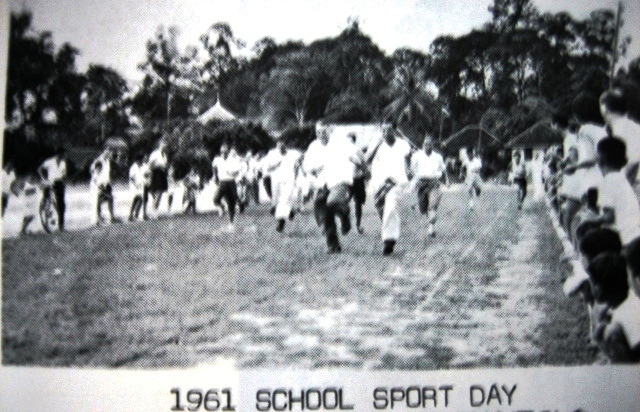 |
||||||||||||||||
| In 1960 the Marist Brothers came to take over the Chinese School. In 1963, Brother Adrian replaced Brother Fridolin as Principal, and that same year the Chinese Junior Secondary School was absorbed into the English secondary School with Chinese taken as a subject only. This was in line with the National System of Education which required that all Chinese Secondary Schools be gradually converted to English Medium Schools with Chinese converted to English Medium Schools with Chinese as a subject. However, the Chinese Primary school remained, as the National System of Education did not affect Primary Schools. Bahasa Malaysia was introduced in to the school curriculum in 1964. The following year the first Cambridge Higher School Certificate Science class was opened in the school. This latest expansion caused the school to be filled to capacity. | ||||||||||||||||
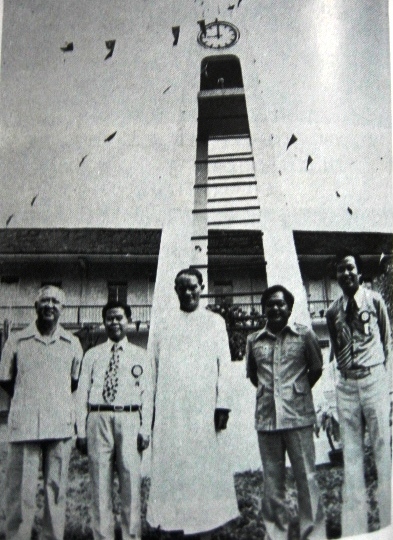 |
||||||||||||||||
| As the Government wanted to requisite some of the school property on Mission Road for commercial and industrial purposes, and as there was no room for further expansion there, a piece of 14 acres land was bought at 11/2 miles, Oya Road, and a new secondary School was built on this land. On 1/6/1967 the Secondary School moved to Oya Road while the English and Chinese Primaries remained at Mission Road. The following year the school land at Mission Road was disposed of and the end of 1969 the English Primary School was moved to its new building beside the Secondary school at Oya Road. The Chinese Primary School removed to its new site behind Catholic School at Lanang Road. The total enrolments between the three schools leapfrogged to 1250 in that year, 1969. In 1972, Brother Adrian was transferred to Kuching and was by Brother Albinus as Principal. The following year marked the introduction of a lower Sixth Arts class. Recent progress and development of the school have included the expansion of the library facilities, extension off Science blocks and tuck-shop and renovation of the office building. At the beginning of 1977 the school had expanded to include 3 Transition classes, 6 Form One's,5 Form Two's, 4 Form Three's, 4 Form Four's, 3 Form Five's, 2 Lower Sixth Arts classes, one Lower Sixth Science, one Upper Sixth Science and one Upper sixth Arts class. The total enrolment stands at about 1300. |
||||||||||||||||
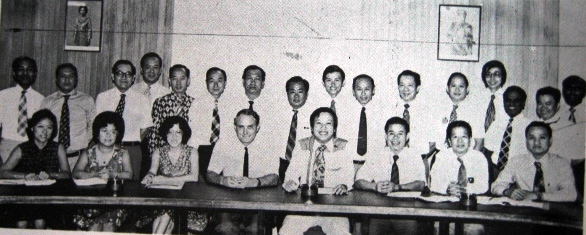 |
||||||||||||||||
| From a small 'atap' shed, Sacred Heart School has developed and progressed into an ultra-modern school, second to nuns in Malaysia in just 75 years. This is attributed mainly into the untiring work and dedication of Principals like Father Hopfgarther, Father Halder, Father Adrian de Vos and all the others, and undivided loyalty and cooperation shown by the Old Boys and the general public. | ||||||||||||||||
| ( Written by Stephen Tan Siew Hua and John Ting Sia Ing) | ||||||||||||||||
| The school was started as Sacred Heart School in 27 December 1902. The school history can be broadly categorized into three eras. It was under the administration of the Catholic Mission , followed by the de La Salle Brothers and presently our own home-grown administrators. The school was started as Sacred Heart School in 27 December 1902. The school history can be broadly categorized into three eras. It was under the administration of the Catholic Mission , followed by the de La Salle Brothers and presently our own home-grown administrators. | ||||||||||||||||
|
A) The school under the Catholic Mission.
|
||||||||||||||||
|
B) The school under de La Salle Brothers.
|
||||||||||||||||
|
C) The school under our own home-grown administrators.
|
History Of SHS
- Details

